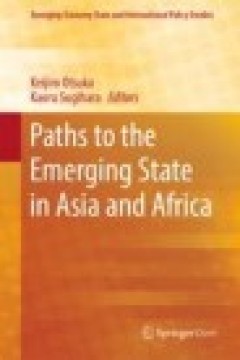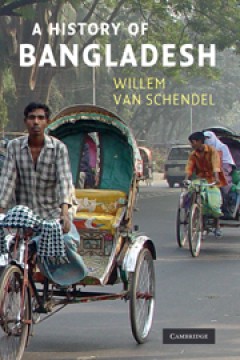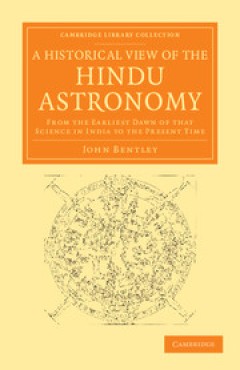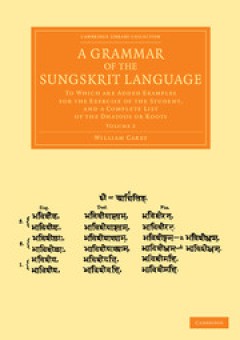Filter by

Animals in Stone: Indian Mammals Sculptured Through Time
The art history of South Asia covers a time span of roughly four and a half thousand years. During this period, a vast number of animal stone sculptures has been produced, ranging from the pre-historic period till today and covering a great variety of motifs and imagery in different regions and religious traditions. Even so, the number of studies devoted to these animal sculptures has remained …
- Edition
- Volume: 21
- ISBN/ISSN
- 978-90-47-44356-8
- Collation
- -
- Series Title
- -
- Call Number
- -

Emerging States and Economies: Their Origins, Drivers, and Challenges Ahead
This open access book asks why and how some of the developing countries have “emerged” under a set of similar global conditions, what led individual countries to choose the particular paths that led to their “emergence,” and what challenges confront them. If we are to understand the nature of major risks and uncertainties in the world, we must look squarely at the political and economic…
- Edition
- 1
- ISBN/ISSN
- 9789811326349
- Collation
- X, 177hlm,: ill, lamp;
- Series Title
- -
- Call Number
- -

Paths to the Emerging State in Asia and Africa
This book addresses the issue of how a country, which was incorporated into the world economy as a periphery, could make a transition to the emerging state, capable of undertaking the task of economic development and industrialization. It offers historical and contemporary case studies of transition, as well as the international background under which such a transition was successfully made (or…
- Edition
- 1
- ISBN/ISSN
- 9789811331312
- Collation
- XXI, 292 hlm,: ill, lamp;
- Series Title
- -
- Call Number
- -

Jesuit and English Experiences at the Mughal Court, c. 1580–1615
This open access book reconstructs and examines a crucial episode of Anglo-Iberian diplomatic rivalry: the clash between the Portuguese-sponsored Jesuit missionaries and the English East India Company (EIC) at the Mughal court between 1580 and 1615. This 35-year period includes the launch of the first Jesuit mission to Akbar’s court in 1580 and the preparation of the royal embassy led by Sir …
- Edition
- 1
- ISBN/ISSN
- 978-3-030-96588-4
- Collation
- -
- Series Title
- New Transculturalisms, 1400–1800
- Call Number
- IX, 257

A History of Bangladesh
Bangladesh is a new name for an old land whose history is little known to the wider world. A country chiefly famous in the West for media images of poverty, underdevelopment, and natural disasters, Bangladesh did not exist as an independent state until 1971. Willem van Schendel's history reveals the country's vibrant, colourful past and its diverse culture as it navigates the extraordinary twis…
- Edition
- -
- ISBN/ISSN
- 9780511997419
- Collation
- -
- Series Title
- -
- Call Number
- -

A Historical View of the Hindu Astronomy
Shrouded in poetry, the earliest accounts of Hindu astronomy can strike modern readers as obscure. They involve the marriage of the moon to twenty-seven princesses, a war between gods and giants, and shadows that give birth to planets. In this fascinating study, first published in Calcutta in 1823 and reissued here in the 1825 edition, John Bentley (c.1750–1824) strives to strip back the myth…
- Edition
- -
- ISBN/ISSN
- 9781139506533
- Collation
- -
- Series Title
- Cambridge Library Collection - South Asian History
- Call Number
- -

A Grammar of the Sungskrit Language to Which Are Added Examples for the Exer…
The Indo-Aryan language of Sanskrit is the primary language of Hinduism and also a scholarly language of Buddhism. Dating back to the second millennium BCE, it is considered to be the parent of most modern languages of India, and remains central to work in Indo-European studies, philology and linguistics today. First published in 1806, this is a comprehensive grammar of Sanskrit, compiled by th…
- Edition
- -
- ISBN/ISSN
- 9781139507271
- Collation
- -
- Series Title
- Cambridge Library Collection - Perspectives from the Royal Asiatic Society
- Call Number
- -

Inscriptions of the Aulikaras and Their Associates
The Aulikaras were the rulers of western Malwa (the northwest of Central India) in the heyday of the Imperial Guptas in the fifth century CE, and rose briefly to sovereignty at the beginning of the sixth century before disappearing from the spotlight of history. This book gathers all the epigraphic evidence pertaining to this dynasty, meticulously editing and translating the inscriptions and an…
- Edition
- -
- ISBN/ISSN
- 9783110644722
- Collation
- -
- Series Title
- -
- Call Number
- 054

A Grammar of the Mahratta Language To Which Are Added Dialogues on Familiar …
Marathi, an official language of Maharashtra and Goa, is among the twenty most widely spoken languages in the world. The southernmost Indo-Aryan language, it is also spoken in Gujarat, Madhya Pradesh, Karnataka, and Daman and Diu, and is believed to be over 1,300 years old, with its origins in Sanskrit. First published in 1805, this grammar of Marathi (then known as Mahratta) was compiled by th…
- Edition
- -
- ISBN/ISSN
- 9781139519847
- Collation
- -
- Series Title
- Cambridge Library Collection - Perspectives from the Royal Asiatic Society
- Call Number
- -

A Grammar of the Sungskrit Language To Which Are Added Examples for the Exer…
The Indo-Aryan language of Sanskrit is the primary language of Hinduism and also a scholarly language of Buddhism. Dating back to the second millennium BCE, it is considered to be the parent of most modern languages of India, and remains central to work in Indo-European studies, philology and linguistics today. First published in 1806, this is a comprehensive grammar of Sanskrit, compiled by th…
- Edition
- -
- ISBN/ISSN
- 9781139507264
- Collation
- -
- Series Title
- Cambridge Library Collection - Perspectives from the Royal Asiatic Society
- Call Number
- -
 Computer Science, Information & General Works
Computer Science, Information & General Works  Philosophy & Psychology
Philosophy & Psychology  Religion
Religion  Social Sciences
Social Sciences  Language
Language  Pure Science
Pure Science  Applied Sciences
Applied Sciences  Art & Recreation
Art & Recreation  Literature
Literature  History & Geography
History & Geography